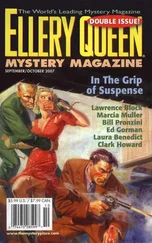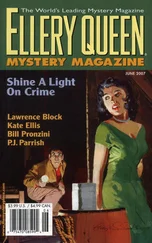New York laughed.
Still, like his British cousin from Cheshire, the Cat lingered in his grin after the rest of him had vanished. It was not the grin of the old man in the cell; that old man did not grin. It was the grin of the dream monster. And there were the children, with shorter memories but fresher senses. Parents had still to contend with nightmares. Not excluding their own.
Then, on the morning after Armistice Day, the body of a young girl later identified as Reva Xavinzky, of Flushing, was found in various places about Jamaica Bay. She had been ravished, mutilated, dismembered, and decapitated. The familiar horrors of this case, its recognizably atrocious details, instantly diverted public attention; and by the time the murderer, an ex-Army deserter with a typical history of the sexual psychopath, was caught, the diversion — at least insofar as adults were concerned — was complete. Thereafter the word “cat” raised no grislier image in the mind’s eye of the average New Yorker than that of a small domestic animal characterized by cleanliness, independence, and a useful appetite for mice. (That the case of Reva Xavinzky, performed a like service for younger New York may be questioned; but most parents seemed to feel that with Thanksgiving and Christmas hovering, the Cat would be supplanted in their children’s dreams by turkey and Santa Claus. And perhaps they were right.)
There was a minority with special interests, however, who hung on. For some — certain City officials, reporters, psychiatrists, the families of the Cat’s victims — this was a matter of duty, or specific assignment, or professional or personal implication. For others — the sociologists, the psychologists, the philosophers — the capture of the nine-times murderer signalized the opportunity to launch a socio-scientific investigation of the City’s behavior since early June. The second groups were wholly unconcerned with Edward Cazalis; the first were concerned with no one else.
The prisoner had retreated to a sullen phase. He refused to talk, he refused to exercise, for a time he refused to eat; he appeared to exist only for the visits of his wife, for whom he called constantly. Mrs. Cazalis, accompanied by her sister and brother-in-law, had flown back from Florida on October 30. She had refused to believe the reports of her husband’s arrest as the Cat, protesting to reporters in Miami and New York that “there’s some mistake. It can’t be. My husband is innocent.” But that was before her first meeting with him. She emerged from it deathly pale, shaking her head to the press, going directly to the home of her sister. She was there for four hours; then she returned to her own apartment.
It was noted in those first excited days after the monster’s capture that it was his mate who took the full impact of the City’s animus. She was pointed out, jeered at, followed. Her sister and brother-in-law vanished; no one could or would say where they had gone. Her maid deserted her and she was unable to engage another. She was asked to vacate her apartment by a management that made it frantically clear they would use every means within their power to evict her if she resisted. She did not resist; she placed her household furnishings in storage and moved to a small downtown hotel; and when the hotel management discovered who she was the next morning, she was asked to leave. This time she found quarters in a lugubrious rooming house on Horatio Street in the Village; and it was here that her eldest brother, Roger Braham Merigrew of Bangor, Maine, located her.
Merigrew’s visit to his sister did not outlast the night. He had come accompanied by a shadlike man carrying a briefcase; when the two emerged from the Horatio Street building at 3:45 in the morning and found the reporters waiting, it was Merigrew’s companion who covered his factor’s escape and gave the statement which appeared in the newspapers later that day. “As Mr. Merigrew’s attorney I am authorized to state the following: Mr. Merigrew has attempted for several days to persuade his sister, Mrs. Cazalis, to rejoin her kin in Maine. Mrs. Cazalis refused. So Mr. Merigrew flew down to renew his appeal in person. Mrs. Cazalis still refuses. There is nothing further Mr. Merigrew can do, therefore he is returning home. That’s all there is to this.” Asked by reporters why Mr. Merigrew did not remain by his sister’s side in New York, the Maine attorney snapped, “You’ll have to ask Mr. Merigrew that.” Later, a Bangor paper managed to get a few words from Merigrew. He said, “My sister’s husband is insane. There’s no cause to stand by a murdering lunatic. It’s not fair to us, the publicity and so on. Any further statement will have to come from my sister.” The Merigrews owned large conservative business interests throughout New England.
So Mrs. Cazalis faced her ordeal alone, living in a squalid Village room, dogged by reporters, visiting her husband, and growing daily wilder-eyed and more silent.
She engaged the famous attorney, Darrell Irons, to defend her husband. Irons was uncommunicative, but it was rumored that he was having his hands full. Cazalis, it was said, “refused” to be defended and would not co-operate with the psychiatrists Irons sent endlessly to his cell. Stories began to circulate of maniacal rages, attempted physical violence, incoherent ravings on the part of the prisoner; those who knew Darrell Irons stated that he had inspired them and that most likely, therefore, they were not true. It was clear what Irons’s defense would be, for the District Attorney seemed determined to prosecute Cazalis as a man who knew the nature and quality of his acts, who had demonstrated in his daily life even during the period of his crimes his capacity to act rationally and who therefore, under legal definition, must be considered “sane,” no matter what he may have been under the medical definition. The District Attorney set considerable store, it was said, by the prisoner’s conversations with the Mayor’s Special Investigator and Inspector Richard Queen of Police Headquarters on the night of the Lenore Richardson investigation, when he had outlined his “theory” of the Cat case as pointing to a psychotic pure and simple. This had been the calculated act of a calculating murderer, the D.A. was said to hold, purposely turning the investigation into a channel of “gibbering idiocy” the more effectually to divert attention from the responsible mentality behind the stranglings.
A dramatic trial was forecast.
Ellery’s interest in the case flagged early. He had lived with it far too long at too steep a pitch to experience anything but exhaustion after the events of the night of October 29–30. He found himself trying not merely to forget the past but to dodge the present. The present, at least, would not to be evaded; it insisted on applying pomp to circumstance. There were Athenian honors, press and radio-television interviews, a hundred invitations to address civic groups and write articles and investigate unsolved crimes. He managed to back away from most of these with approximate grace. The few he could not avoid left him irritable and profane. “What’s the matter with you?” demanded his father. “Let’s say,” snapped Ellery, “that success has gone to my head.” The Inspector puckered; he was no stranger to migraine, either. “Well,” he said cheerfully, “at least this time it’s not caused by failure.”
Ellery continued to fling himself from chair to chair.
One day he decided he had located the infection. It was the boil of pressure. But not of the past or the present; of the future. He was not finished. On the morning of January 2, in one of the larger courtrooms under the gray dome of the Supreme Court building in Foley Square, a Mr. Justice-Somebody would make his blackrobed entrance from chambers and one Edward Cazalis, alias the Cat, would go on trial charged with murder. And in this trial one Ellery Queen, Special Investigator to the Mayor, would be a major witness for the people. There would be no release for him until that ordeal was passed. Then he could go about his business purged of the whole corrupting mess.
Читать дальше












